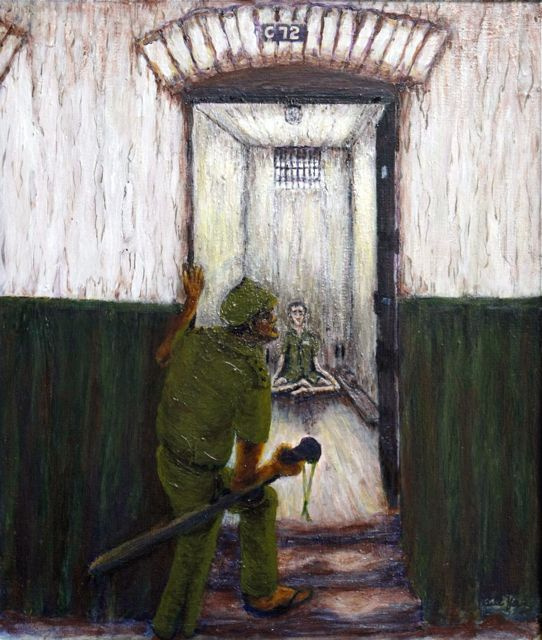The Story of Billy Young home page
'...A timely and necessary book'
Review of The Story of Billy Young
By Christopher Bantick
Hobart Mercury, 28-29 July 2012
Writer Anthony Hill is well known to Tasmanian readers. His books, especially the continually important Soldier Boy are popular with library borrowers.
While Soldier Boy dealt with young Jim Martin ( the youngest Australian soldier enlisted in World War 1) his new book The Story of Billy Young is something else. This is because the book deals with far darker themes.
 Central to it is the brutality of the Japanese guards and commanders who oversaw the punishment of Australian prisoners of war. Because of the subject matter and the vividness of the description, the book is not suitable for younger readers. It is however a vital read for senior students studying Australia’s World War 11 involvement.
Central to it is the brutality of the Japanese guards and commanders who oversaw the punishment of Australian prisoners of war. Because of the subject matter and the vividness of the description, the book is not suitable for younger readers. It is however a vital read for senior students studying Australia’s World War 11 involvement.
Cell C 72, by Billy Young
Teachers will find it a valuable resource to mine for their classes.
Many Tasmanian readers, and specifically those in Hobart, may not know that Billy Young came from a family based in New Town. When he returned from the war a broken, shattered man, he went to Sydney where he had grown up around Redfern.
Yet while it is this early local association which gives the book some specific point for Tasmanian readers, the themes are deeply significant for all Australians. This is the personal costs of incarceration the surviving prisoners carried back to Australia. Billy Young or "Billy the Kid" as he was known because of his age, was one of them. He enlisted in the army when he was just 15 years old.
Hill has a unique way of telling a story. He takes readers into conversations which appear to be in the present moment. This gives the book a certain immediacy. More than this it engages with readers and particularly young people. The first person voice is often compelling.
The narrative trajectory of the story covers one of the darkest periods in Australian history. This is what happened to the soldiers who were captured by the Japanese after the fall of Singapore in 1942. Billy was with the 2/29th battalion and his war in effect finished there.
The journey Hill takes readers on is both graphic and a celebration of the human spirit. The Australian soldiers were treated appallingly. Many died not just from malnutrition, disease or overwork but as a direct result of the sadistic punishment they experienced. The book goes to some length to make this point.
Billy Young was "fortunate", but only in the context that he escaped the horrific prisoner of war death march from Sandakan. Out of 2500 service personnel only six survived this death march. Billy escaped what is arguably the worst war crime committed by the Japanese on Australian troops.
While Billy Young did not go on the Sandakan death marches, he was recaptured and was then sent to the infamous Outram Road prison in Singapore. He spent two and a half years there, suffering solitary confinement and severe physical deprivations.
Hill provides many anecdotes of the treatment of prisoners by way of illustrating his point that Australian troops like Billy Young were subject to methodical atrocities. They are explained with sharp realism. This is why the book is not really pitched at younger readers.
But there is something else present here. This is the resilience of the Australian soldiers in captivity. This was largely derived through a black sense of humour and the collective sense of mateship that, no matter what, there was someone ready to help.
When Young returned from the war aged 19, he was carrying hidden wounds. At times the book is profoundly moving when Young, now 86, reflects on his life and how he was shaped forever in his adolescent years. He now explores his inner self, writing poetry and painting in Sydney.
Besides the clarity of Hill's writing, the book has many photographs and coloured illustrations done by Billy showing the life and death experience by prisoners. Many are harrowing in their simplicity.
This is a book that is sure to have an impact on anyone who reads it. It is a timely and necessary book. Australian prisoners of war are often hidden and, not uncommonly, do not participate in commemorations such as Anzac Day.
Reading this splendid book is reason enough to explain why.